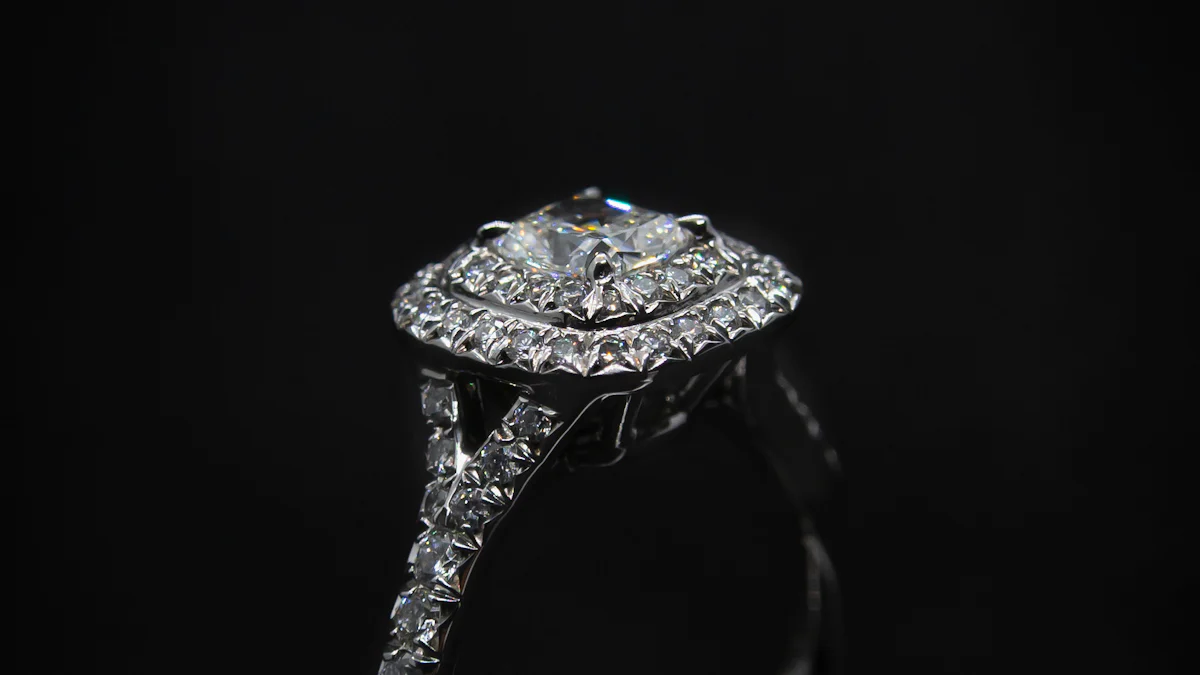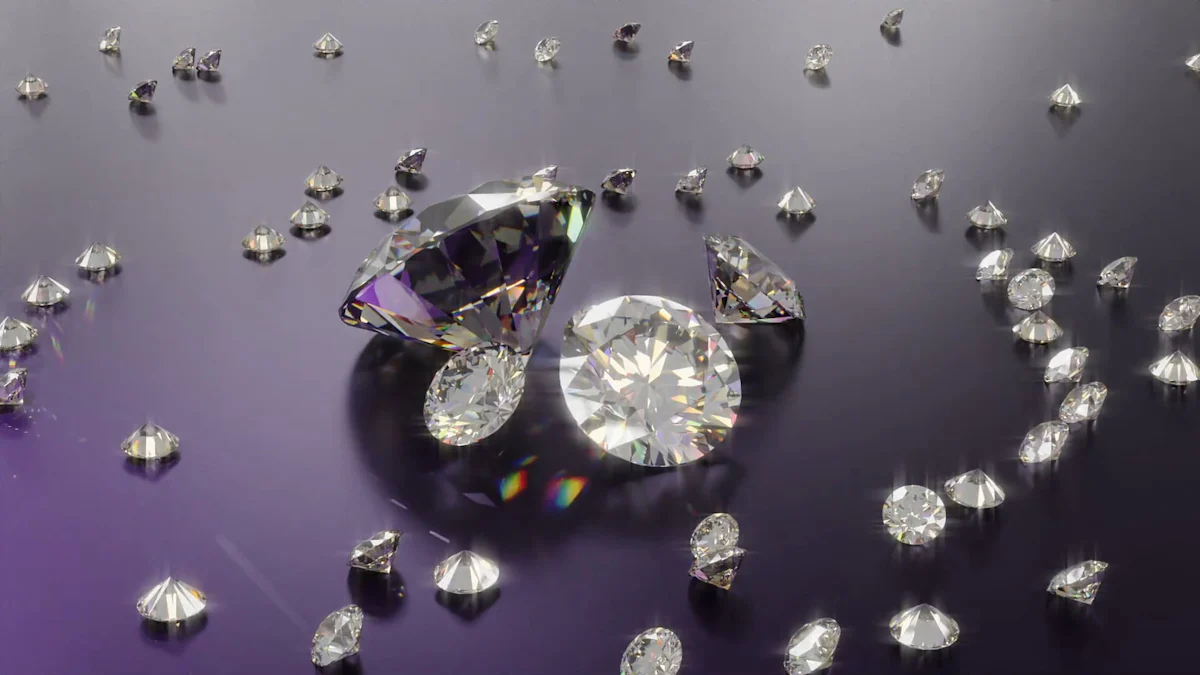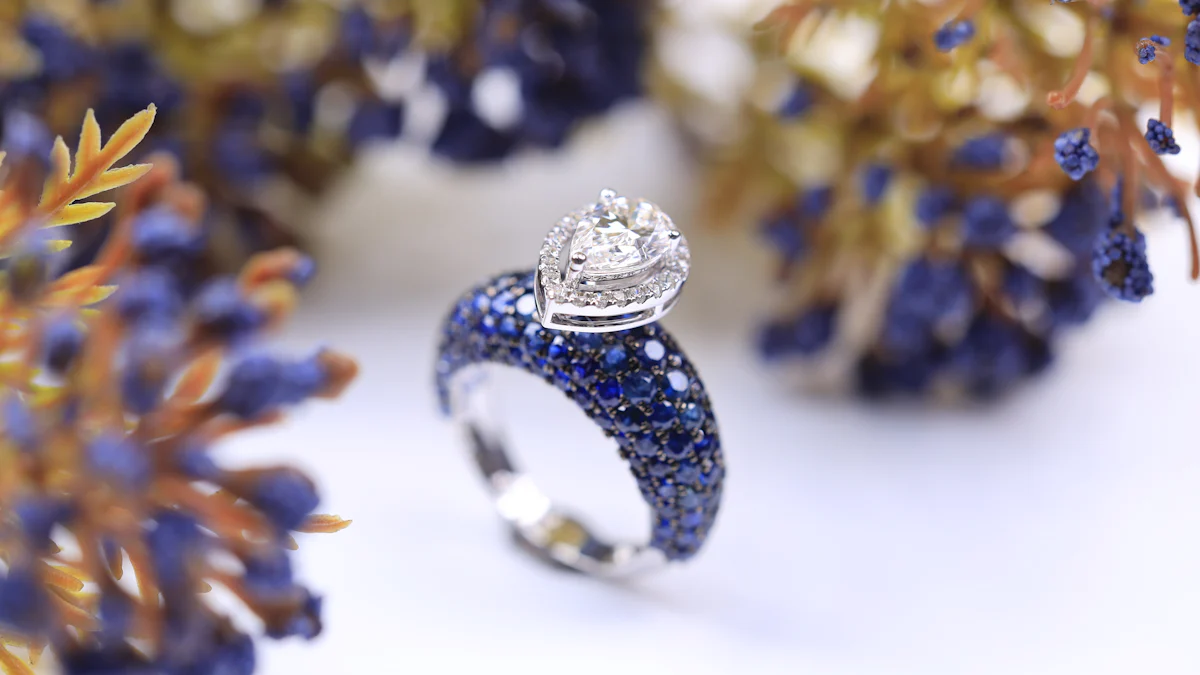Are Diamonds a Scam? Tips to Avoid Being Fooled

When it comes to buying diamonds, it’s easy to feel overwhelmed. You might wonder, are diamonds a scam? The truth is, the diamond industry has its fair share of shady practices. For instance, some sellers skip reliable grading to pass off low-quality stones. Others sell overgraded diamonds, inflating their value. Shockingly, studies suggest that 1 in 5 diamonds sold online could be fake. These risks make it crucial for you to stay informed. By understanding the tricks of the trade, you can avoid falling victim to these common scams.
Are Diamonds a Scam? Common Scams to Watch For
Fake or Synthetic Diamonds
One of the most common scams in the diamond world involves selling fake or synthetic diamonds as natural ones. You might think you're buying a rare, earth-mined gem, but in reality, it could be lab-grown or even a counterfeit. Shockingly, studies show that 1 in 5 diamonds sold online might not be genuine. So, how can you tell the difference?
Here are a few ways to spot a synthetic diamond:
- Thermal conductivity test: Natural diamonds conduct heat, while some lab-created ones don’t.
- Clarity inclusions: Lab-grown diamonds often have fewer inclusions, making them look "too perfect."
- Color: Synthetic diamonds are usually very colorless to enhance their sparkle.
- Price: If the price seems too good to be true—like 75% less than similar diamonds—it’s probably synthetic.
Always ask for a certificate from a reputable gemological lab to confirm the diamond’s origin. This simple step can save you from falling for this scam.
Overgrading and Misrepresentation
Overgrading is another sneaky tactic used to inflate a diamond’s value. Some jewelers rely on shady grading practices to make diamonds appear better than they really are. For example, diamonds with strong blue fluorescence can look whiter under ultraviolet (UV) light. This trick can bump a diamond’s grade up by three or four levels. Imagine paying for a high-grade "D" diamond, only to find out later it’s closer to a low "H."
To avoid this, stick to diamonds graded by trusted labs like GIA or AGS. These organizations use strict standards and don’t rely on UV lighting, so you’ll know exactly what you’re getting.
Misleading Pricing and Discounts
Have you ever seen a diamond "on sale" for 50% off and thought it was a steal? Unfortunately, this is often a pricing scam. Jewelers sometimes inflate prices, then mark them down to create the illusion of a deal. Other times, they sell uncertified diamonds at attractive prices, hiding their true value.
Some even use sham certificates to misrepresent a diamond’s quality. Worse, bait-and-switch tactics lure you in with one product, only to sell you something inferior. To protect yourself, compare prices across multiple vendors and avoid deals that seem too good to be true. Remember, a legitimate jeweler will always provide transparent pricing and certification.
Undisclosed Treatments and Enhancements
Did you know that some diamonds undergo treatments to improve their appearance? While this isn’t inherently bad, the problem arises when jewelers fail to disclose these enhancements. You might unknowingly pay a premium for a diamond that’s been artificially altered. Let’s break down the most common treatments you should watch out for.
-
Fracture Filling: This process involves filling cracks or fractures in a diamond with a glass-like substance. It makes the stone look flawless, but the filling can wear off over time. If you’re not aware of this, you could end up with a diamond that loses its sparkle.
-
Laser Drilling: Jewelers use lasers to remove dark inclusions inside a diamond. While this improves clarity, it also weakens the stone. A laser-drilled diamond is less durable, which isn’t something you’d want in a long-term investment.
-
Color Enhancements: Some diamonds are treated with high-pressure, high-temperature (HPHT) processes or coatings to improve their color. These treatments can make a diamond appear more valuable than it really is.
So, how can you protect yourself? Always ask if the diamond has undergone any treatments. A trustworthy jeweler will provide full disclosure. Also, check the certification. Reputable labs like GIA or AGS will note any enhancements on the report. If the jeweler hesitates or avoids the question, consider it a red flag.
Remember, the diamond industry has its fair share of tricks. You might even wonder, are diamonds a scam? The truth is, they don’t have to be if you stay informed. By asking the right questions and verifying the details, you can avoid being fooled by undisclosed treatments.
How to Verify Diamond Authenticity

Importance of Certification
When buying a diamond, certification is your best friend. It’s the only way to know exactly what you’re paying for. A reliable certificate from a trusted lab, like GIA or AGS, verifies the diamond’s quality and authenticity. Without it, you’re taking the seller’s word, which can be risky.
A good certification includes details about the diamond’s key features:
- Carat Weight: The diamond’s weight, measured in carats.
- Color: The level of color tint, graded from D (colorless) to Z (light yellow or brown).
- Clarity: The presence of imperfections, like inclusions or blemishes.
- Cut: The diamond’s proportions, symmetry, and polish, which affect its brilliance.
Always ask for a certificate before making a purchase. It’s your proof that the diamond is genuine and matches the seller’s claims.
Professional Appraisals
A professional appraisal is another way to confirm a diamond’s authenticity. Appraisers use advanced testing techniques to verify the diamond’s identity and quality. They rely on scientific tools and certifications to ensure accuracy.
Reputable appraisers also check for certification from trusted organizations like GIA, AGS, or IGI. These institutions thoroughly examine diamonds and provide reliable reports. If you’re unsure about a diamond, getting it appraised can give you peace of mind. It’s a small investment that can save you from buying a fake or overvalued stone.
Tools for Testing Diamonds
You don’t need to be an expert to test a diamond’s authenticity. Simple tools and tests can help you spot a fake. Here are some you can try:
- Water Test: Drop the diamond in water. A real diamond sinks because of its density.
- Fog Test: Breathe on the diamond. Genuine diamonds clear fog quickly due to their heat conductivity.
- Newspaper Test: Place the diamond on printed text. If you can read the text through it, it’s likely not real.
- Black Light Test: Shine UV light on the diamond. Many real diamonds fluoresce blue.
For more accurate results, use a diamond tester. This device measures thermal and electrical properties to confirm authenticity. And, of course, always check for certification from a reputable lab.
By using these methods, you can confidently answer the question, "are diamonds a scam?" With the right tools and knowledge, you’ll avoid being fooled and make a smart purchase.
Choosing a Trustworthy Jeweler
Finding a jeweler you can trust is one of the most important steps when buying a diamond. A reliable jeweler ensures you get what you pay for and helps you avoid scams. Here’s how you can identify a trustworthy one.
Researching Reputation
Start by digging into the jeweler’s reputation. A little research can save you from a lot of trouble. Look for:
- Reputation and reviews: Check online reviews and customer testimonials. Do people praise their honesty and service?
- Quality of products: Ask about the materials they use and whether their diamonds come with certifications.
- Customer service: Notice how they treat you. Are they friendly, knowledgeable, and focused on your needs?
A jeweler with a strong reputation will have nothing to hide. If you see consistent complaints or vague answers, it’s a sign to walk away.
Asking the Right Questions
Asking the right questions can reveal a lot about a jeweler’s transparency. Here are some key ones to ask:
- Is this diamond enhanced or treated?
- Do you have the grading report for the diamonds I’m looking at?
- May I see the diamond’s certificate?
- Will I receive an appraisal with the ring?
- What is the warranty, and how should I insure the ring?
- Can I upgrade the diamond later?
A trustworthy jeweler will answer these questions clearly and confidently. If they dodge your questions or seem unsure, that’s a red flag.
Avoiding High-Pressure Sales Tactics
High-pressure sales tactics are a major warning sign. You should never feel rushed or coerced into making a purchase. Watch out for these red flags:
- Salespeople rushing you to sign documents.
- Promises that contradict written contracts.
- Claims about resale options or maintenance fees that seem unclear.
- Refusal to let you cancel within the agreed timeframe.
Take your time and trust your instincts. A good jeweler will give you space to make an informed decision. If you feel pressured, it’s better to walk away than risk being scammed.
By following these tips, you’ll feel more confident in choosing a jeweler. You won’t have to wonder, "are diamonds a scam?" Instead, you’ll know you’re working with someone who values honesty and quality.
Understanding Diamond Pricing

The 4Cs and Their Impact on Price
When it comes to diamond pricing, the 4Cs—cut, color, clarity, and carat—play a huge role. Each one affects the value of a diamond in a unique way. Here’s how:
- Cut: This determines how well a diamond reflects light. A well-cut diamond sparkles brilliantly, making it more desirable and expensive.
- Color: Diamonds are graded from D (colorless) to Z (light yellow or brown). Colorless diamonds are rare and fetch higher prices.
- Clarity: This measures imperfections, like tiny inclusions or blemishes. Diamonds with fewer flaws look cleaner and cost more.
- Carat: Carat refers to the size of the diamond. Larger diamonds are rarer, which makes them pricier.
Understanding these factors helps you decide what matters most to you. For example, if sparkle is your priority, focus on the cut. If size impresses you, carat weight might take the lead. Knowing this ensures you get the best value for your money.
Comparing Prices Across Vendors
Shopping around can save you a lot of money. Different vendors price diamonds differently, even for stones with similar qualities. Why? Overhead costs, added services, and brand reputation all play a part.
By comparing prices, you can spot these differences and make a smarter choice. Some jewelers offer perks like gemologist inspections or extended warranties. Others might include free resizing or cleaning services. These extras can add value to your purchase.
Take your time to research. Look at multiple vendors and weigh their offerings. This way, you’ll feel confident that you’re getting the best deal without sacrificing quality.
Red Flags in Discounted Deals
Big discounts on diamonds might seem tempting, but they often come with risks. Reputable jewelers rarely offer massive markdowns on diamonds themselves. Instead, they might discount settings or other accessories.
If a deal feels too good to be true, it probably is. Watch out for vague certifications or missing details about the diamond’s quality. Some sellers use discounts to hide flaws or treatments.
Stick to trusted vendors like Blue Nile or James Allen. They don’t heavily discount their diamonds, so you know you’re paying for quality. Always ask questions and trust your instincts. A little caution can save you from a costly mistake.
Avoiding diamond scams doesn’t have to feel overwhelming. With the right knowledge, you can shop confidently and make smart decisions. Here are some key tips to keep in mind:
- Always buy diamonds with a trusted certificate from GIA or AGS.
- Be cautious of fake certificates or inflated discounts that seem too good to be true.
- Research the 4Cs—cut, color, clarity, and carat—to understand what you’re paying for.
- Compare prices across sellers to avoid overpaying.
- Stick to reputable jewelers and avoid high-pressure sales tactics.
Trust your instincts and stay informed. By following these steps, you’ll protect yourself from scams and find a diamond that’s truly worth your investment.
FAQ
What’s the difference between lab-grown and natural diamonds?
Lab-grown diamonds are created in a lab, while natural diamonds form over millions of years underground. Both look identical and have the same chemical structure. The main difference? Lab-grown diamonds cost less and are eco-friendly. Natural diamonds, however, hold more resale value and emotional significance for some buyers.
How can I tell if a diamond is fake?
You can try simple tests like the fog test or water test. A real diamond clears fog quickly and sinks in water. For accuracy, use a diamond tester or ask for a GIA or AGS certificate. Always verify authenticity before buying.
Are online diamond purchases safe?
Yes, but only if you shop with reputable vendors like Blue Nile or James Allen. Look for detailed certifications, clear return policies, and customer reviews. Avoid deals that seem too good to be true. Research the seller thoroughly to ensure a safe purchase.
Why are some diamonds so cheap?
Cheap diamonds often have flaws, treatments, or lack proper certification. Sellers might also inflate discounts to hide poor quality. Always check the 4Cs and ask for a grading report. If the price feels suspiciously low, it’s worth investigating further.
Should I buy a diamond without a certificate?
No, you shouldn’t. A certificate from a trusted lab like GIA or AGS ensures the diamond’s quality and authenticity. Without it, you risk overpaying for a stone that might be fake, treated, or misrepresented. Always insist on proper documentation.
See Also
Is the 1.6 ct Diamond Ring Really Worth It?
Tips for Spotting Authentic Diamond Rings at Home
Essential Elements That Influence Diamond Ring Prices

